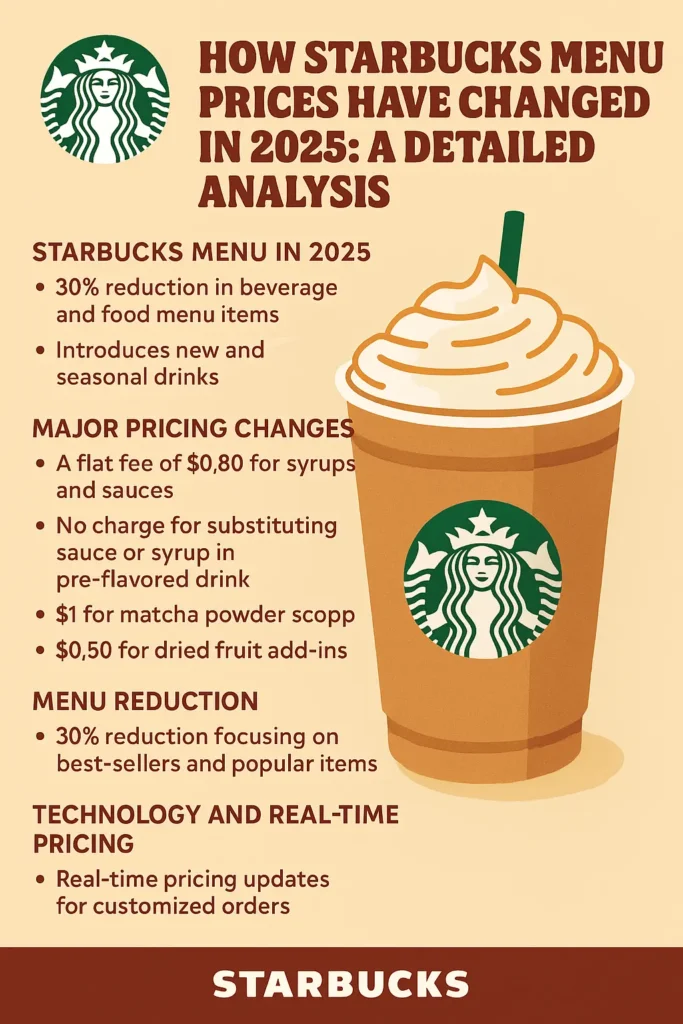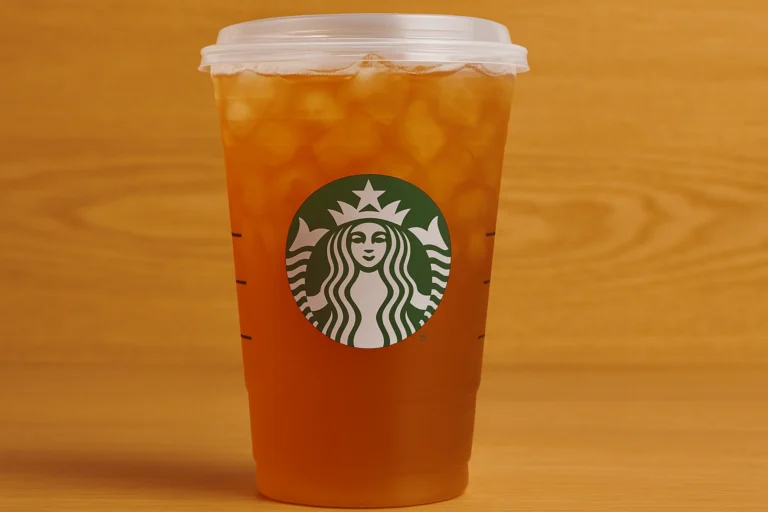How Starbucks Menu Prices Have Changed in 2025: A Detailed Analysis
Starbucks, the world’s most recognized coffeehouse chain, has made significant changes to its menu and pricing strategy in 2025. These updates are designed to simplify the customer experience, provide greater price transparency, and address shifting market dynamics. Here’s a comprehensive look at what’s changed, why it matters, and how it impacts your next Starbucks visit.
Starbucks Menu in 2025: A Shift Toward Simplicity
In 2025, Starbucks announced a bold move: a 30% reduction in both beverage and food menu items by the end of the fiscal year. This streamlining is part of the company’s “Back to Starbucks” initiative, which aims to focus on core offerings and make the customer experience more efficient. CEO Brian Niccol explained that removing less popular and overly complex items will help baristas deliver higher quality and consistency while reducing wait times.

Despite the cuts, Starbucks continues to introduce new and seasonal drinks—such as the Iced Horchata Oatmilk Shaken Espresso and returning favorites like Summer-Berry Refreshers—to keep the menu fresh and appealing.
Major Pricing Changes: Flat Fees and Transparent Customization
One of the most significant updates in 2025 is Starbucks’ new flat fee pricing structure for customizations. In the past, customers often found it difficult to predict the cost of their customized drinks due to unclear upcharges on syrups, sauces, and add-ins. This confusion led to frustration and inconsistent pricing experiences.
Now, Starbucks has introduced:
- A flat fee of $0.80 for any combination of syrups and sauces added to an unflavored drink.
- No extra charge for substituting a sauce or syrup in a pre-flavored drink (e.g., swapping vanilla for mocha in a Caffè Mocha).
- $1 for each scoop of matcha powder added to non-matcha drinks.
- $0.50 per scoop for dried fruit add-ins.
- Classic syrup (liquid sugar) remains free for any drink.
This flat-fee system simplifies the ordering process, allowing customers to know exactly what they’ll pay for customizations—whether they’re adding a single pump of syrup or several flavors at once.
Why the Pricing Shift? Economic and Market Factors
Starbucks’ pricing changes are a direct response to several challenges:
- Rising inflation and increased operational costs, including higher wages and store upgrades.
- Declining U.S. sales and foot traffic, with consumers spending more per visit but making fewer trips overall.
- Customer demand for transparency and simplicity in pricing, especially for customized orders.
The company’s CFO, Rachel Ruggeri, highlighted the need to balance profitability with accessibility. While the average price of a grande brewed coffee has risen nearly 50% since 2020, Starbucks is also investing in promotions and bundled deals to retain price-sensitive customers.
Menu Reduction: What’s Leaving and What’s Staying
The 30% menu reduction means fewer, but more popular, items will be available. Starbucks is focusing on best-sellers and innovative new drinks, while phasing out less-ordered or overly complex beverages and foods. This shift is expected to:
- Improve speed and consistency
- Make way for seasonal and limited-time offerings
- Enhance the overall Starbucks experience
Recent menu updates include the removal of 13 longtime items with the launch of the spring menu, and more cuts are expected throughout the year.
Technology and Real-Time Pricing
To further improve transparency, Starbucks is testing a new feature in its app that shows real-time price updates as customers customize their orders. This helps eliminate surprises at checkout and gives customers full control over their spending.
Customer Reactions and Market Impact
Initial feedback suggests that customers appreciate the clarity and predictability of the new pricing model, especially for complex or highly customized drinks. Baristas also benefit from a simpler, more streamlined ordering process.
However, some loyalists may miss discontinued menu items or feel the impact of higher base prices due to inflation and operational costs. Starbucks is betting that a focus on quality, innovation, and transparency will outweigh these concerns and help reverse recent declines in sales and foot traffic.
Conclusion
In 2025, Starbucks has overhauled its menu and pricing to create a more focused, transparent, and customer-friendly experience. With a 30% menu reduction, flat fees for customizations, and improved pricing transparency, the coffee giant is adapting to changing consumer preferences and economic realities. Whether you’re a fan of classic favorites or eager to try new seasonal drinks, you’ll find a simpler, more predictable Starbucks experience this year.

